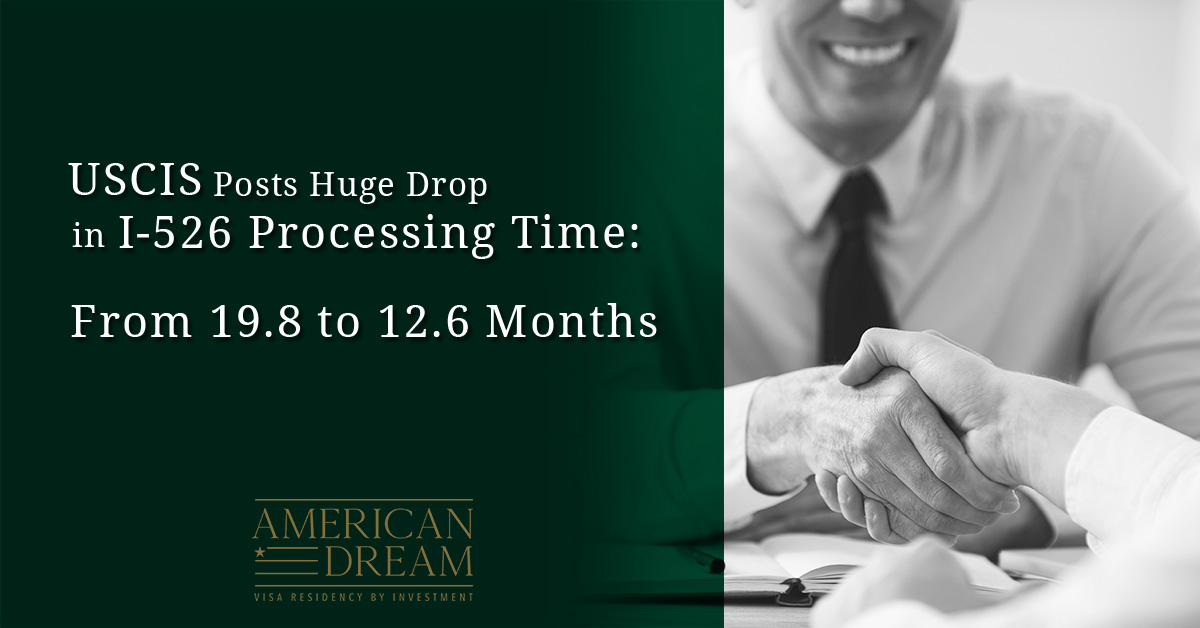U.S. Citizenship and Immigration Services has updated its historical processing time chart and there’s some great news: I-526 processing plummeted from an average time of 19.8 months in FY 2019 to just 12.6 months so far in FY 2020 (Oct. 1 to Jan. 31). EB-5 expert Suzanne Lazicki sees “positive signs” with I-526 processing since COVID-19 started.
Lazicki, perhaps the industry’s greatest follower and interpreter of official processing data, is pleased with what she sees with I-526 processing lately. Besides the official numbers USCIS posts on their Historical Data Page (note these stats vary significantly from the USCIS Check Processing Times page) Lazicki says she has “personally noticed a significant uptick in volume of decision reports since the COVID-19 situation started.”
Potential reasons for the increase in I-526 processing
She sees two reasons for the huge average drop in I-526 processing time from FY 2019 to the first four months of FY 2020: First, she surmises the lockdown has limited EB-5 adjudicators to just processing applications, as opposed to being pulled into non-adjudicating work like site visits and inter-agency coordination. Second, she speculates that delaying and denying petitions doesn’t align with the benefits that EB5 investment brings to the economy as stimulus and job creating force. This begs the question of whether USCIS has been recently mandated to pick up the processing pace.
Recent history of I-526 processing times
Here’s a look at the numbers from the USCIS Historical National Average Processing Times page.
FY 2016 I-526 average: 15.9 months
FY 2017 I-526 average: 18.8 months
FY 2018 I-526 average: 22.2 months
FY 2019 I-526 average: 19.8 months
FY 2020 I-526 average: 12.6 months [most recent stats from October 1, 2019 – January 31. 2020]
USCIS ‘Check Case Processing’ numbers differ wildly from recent reality
EB5 Green Card investors should note that these statistics are a reflective look at what actually happened with processing times. Those numbers differ greatly from those on the USCIS Check Case Processing Times page which appear to offer predictive (some might say “wildly speculative”) times for what processing might look like going forward. The Check Case Processing Times page adds a further element of confusion with the two numbers it offers for a petition type; it currently shows I-526 it shows as 31 to 50.5 months. Besides the startling disconnect to the reality that the Historical Processing page offers, these numbers don’t represent the full range of processing: the lower number is the time to process 50% of the cases (the median) while the higher number represents the time to adjudicate 93% of cases.
USCIS is testing a new method to post processing times
If what you just read seems confusing, give thanks that USCIS has more positive EB5 news: they are now indicating that they are testing a new method to post processing times. This new method will be “more accurate, timely, and easier to understand.” This new method will include all of the major EB-5 applications: I-526, I-829, I-485, and I-924.





